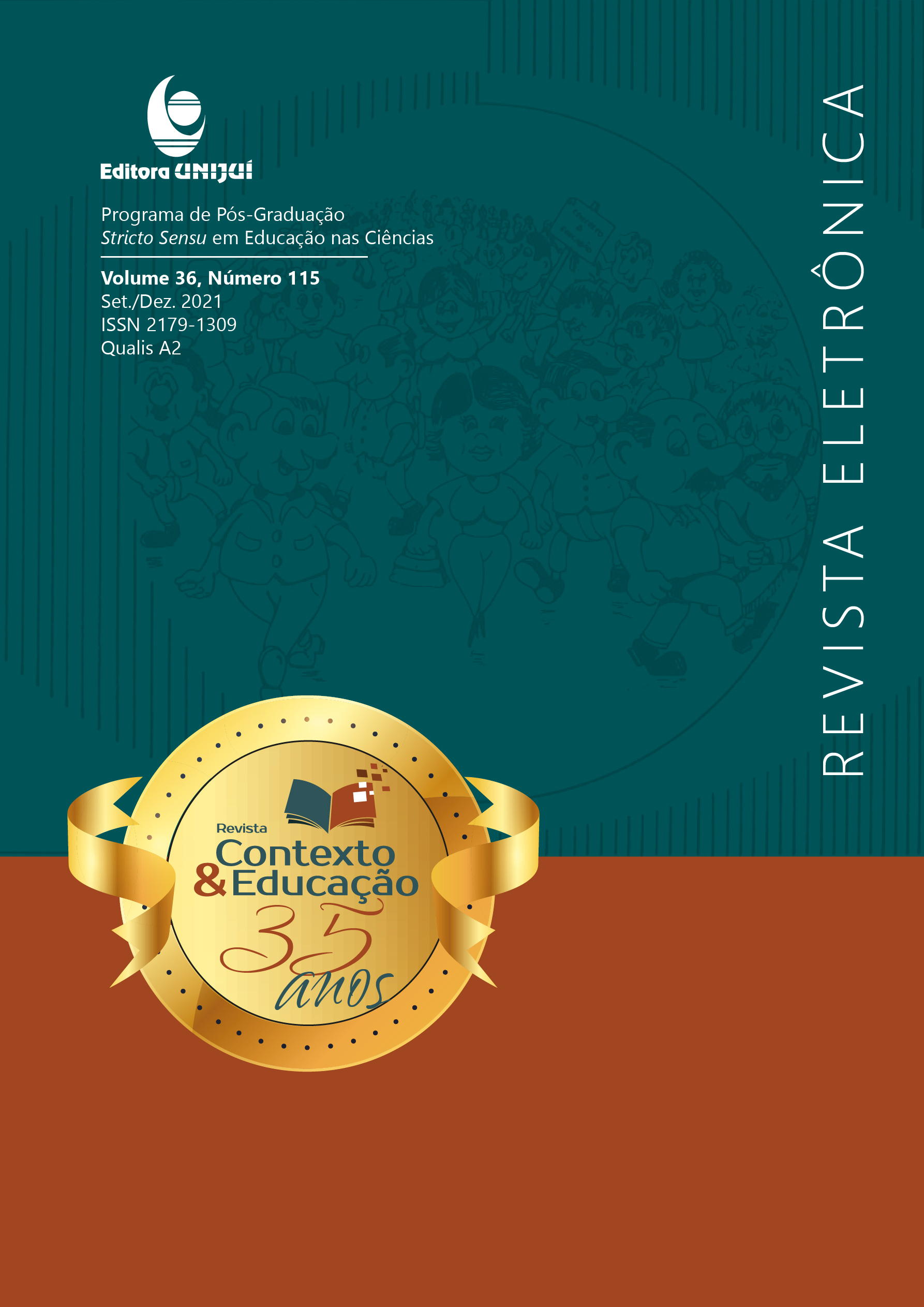STRUCTURE OF CLASS PLANNING FOR FUNDAMENTAL TEACHING
ANALYSIS OF DIDACTIC PROPOSALS ABOUT THE CIRCULATORY SYSTEM
DOI:
https://doi.org/10.21527/2179-1309.2021.115.10144Keywords:
Science teaching; Lesson plan; Three Pedagogical Moments; Instructional model BSCS 5EAbstract
This research investigates and analyzes the structure and resources of circulatory system lesson plans, available at the Portal do Professor – Ministério da Educação. All lesson plans that cited the circulatory system were collected on the Portal (141 plans), and only those who developed the content (15 plans) were selected for the analysis of the problematization, didactic resources and evaluation. The analysis and discussion of the structure of the plans was based on two proposals for organizational methodology, called: Three Pedagogical Moments and BSCS 5E Instructional Model. The results indicate that: problematization predominates as activities and questions about previous knowledge in the introduction of the unit or subject; Digital Technologies and Information and Communication resources are frequent, especially videos; the evaluation process is under-emphasized and not detailed or indicated at the end in the form of a list of questions. The plans use some elements of the methodologies analyzed, but are their own organizations resulting from teaching practice. Identifying and understanding what is valued by teachers in the construction of the lesson plan creates possibilities for enlarge the discussions and the application of proposals that contribute to the teaching practices with reflexes in the teaching and learning process.
Downloads
Published
How to Cite
Issue
Section
License
By publishing in Revista Contexto & Educação, authors agree to the following terms:
All works are published under the Creative Commons Attribution 4.0 International License (CC BY 4.0), which allows:
Sharing — to copy and redistribute the material in any medium or format;
Adaptation — to remix, transform, and build upon the material for any purpose, even commercially.
These permissions are irrevocable, provided that the following terms are respected:
Attribution — authors must be properly credited, a link to the license must be provided, and any changes made must be indicated.
No additional restrictions — no legal or technological measures may be applied that legally restrict others from doing anything the license permits.
Notices:
The license does not apply to elements that are in the public domain or covered by legal exceptions.
The license does not grant all necessary rights for specific uses (e.g., image rights, privacy, or moral rights).
The journal is not responsible for the opinions expressed in the articles, which are the sole responsibility of the authors. The Editor, with the support of the Editorial Board, reserves the right to suggest or request modifications when necessary.
Only original scientific articles presenting research results of interest that have not been previously published or simultaneously submitted to another journal with the same purpose will be accepted.
Mentions of trademarks or specific products are intended solely for identification purposes and do not imply any promotional relationship by the authors or the journal.
License Agreement (for articles published from October 2025): Authors retain the copyright to their article and grant Revista Contexto & Educação the right of first publication.


